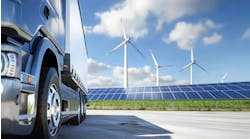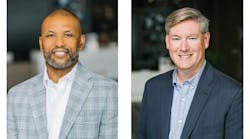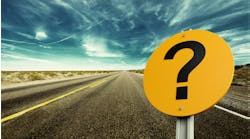Ready or not, ecommerce has come to the commercial vehicle aftermarket, and the supply chain is playing catch-up as customers expect fast and convenient online shopping options. Presenting the right data will be the difference maker for both the suppliers who provide the product information and the distributors who deliver the goods.
To that end, MEMA Aftermarket Suppliers—part of the restructured MEMA, The Vehicle Suppliers Association—has named the inaugural roster of the Heavy Duty eCommerce Committee, a forum within the association’s Business Technology Council.
Read more: Winning the ‘pricing game’The HDeC was established this year to engage in matters related to the business benefits of advancements in ecommerce, product information standards, and related efficiencies for the heavy duty aftermarket industry, and to help remove the barriers to adoption of eCommerce standards, including ACES and PIES, across the selling chain.
“We are very fortunate to have attracted a strong and influential group of select industry veterans who will be proactive partners in engaging with all aspects of the heavy-duty industry to ensure there is comprehensive representation and interaction on matters relating to e-commerce best practices, standards adoption, and sell-chain efficiency,” said Terence O’Reilly, chairman of HDeC and president and CEO of Pricedex Software. “To ensure 360-degree input, representation has been sought from the various segments: manufacturing, distribution, technology, and associations.”
The committee structure provides seats for BTC Executive Committee members, BTC supplier members, a BTC affiliate member, and liaising members representing the distribution sector and industry associations.
“The HDeC inaugural roster boasts a wealth of industry knowledge in the heavy-duty eCommerce space,” said Collin Shaw, chief commercial vehicle officer at MEMA. “As one of the committees within the BTC, HDeC will play a pivotal role in educating, advocating for, and encouraging the use of industry and data standards for growth in the commercial vehicle aftermarket.”
Data is critical
The new committee has roots in discussions between MEMA’s aftermarket arm and representatives of Pricedex, which provides parts management software solutions to the automotive and heavy-duty equipment markets, as MEMA’s Shaw and committee member Jeff Paul, VP of marketing, VIPAR Heavy Duty, told Trailer-Body Builders.
“In discussions since I came on board, we’ve really thought that we needed to put a lot of emphasis on the ecommerce world for heavy duty,” Shaw said. “I’ve had feedback from a lot of people saying, ‘We need better information to sell products.’ And if you’re not providing that information, it’s going to hurt in the future. People are accustomed to finding everything online, and for that information to be detailed and well laid out.”
Paul, representing the Commercial Vehicle Solutions Network, an association for the medium-duty, heavy-duty, and CV aftermarkets, agreed.
“There’s been some industry work in terms of standards over the last three to five years, which has been phenomenal—because, prior to that, there really wasn’t a standard for us to communicate with each other,” Paul said. “We all acknowledge the need for better product data to feed the growing ecommerce adoption level on the heavy-duty side of the business. So the standards have come along way, which is great.”
But, Paul noted, even as the level of product data has increased “exponentially,” suppliers and distributors still have to put the standards to work.
“Making sure that everybody within the supply chain is on the same page, that’s where the need is most,” he said. “We’ve had a good industry-positive step, but now how do we make sure that suppliers and distributors and the rest of the supply chain are talking efficiently?”
Indeed, suppliers initially questioned the need to invest in the manpower and resources to collect product data and make it available to the market when there didn’t seem to be a lot of demand for it. And, now that the product data effort is well underway, “guidance and collaboration” among the industry is needed to ensure that those resources “are put into the right place.”
“At the end of the day, what we’re all trying to do is help our collective end-user customer—be it the fleet, the independent repair garage, the owner-operator, or whatever level you want to look at—get the data so they can find the right product,” Paul said.
Initial confusion or concern about the standards requiring proprietary data were quickly dispelled, Shaw noted. The standards have nothing to do with a supplier’s “secret sauce;” simply, the standards just ensure that everyone in the supply chain speaks the same language when they describe products.
“People want to know, ‘Do I have the right part? What are the dimensions? I want to see a picture,’” Shaw said. “What are their USPs [unique selling points]? That’s really important for the supplier to put in there.”
Eating the elephant
Still, even as the heavy-duty aftermarket understands the growing importance of ecommerce and the need to catch up with the automotive side in terms of the online customer experience, that’s easier said than done.
The more harmful misconception in the marketplace, as Shaw explained, is the idea that the data must be provided as a complete, A-Z set of an entire product line.
“If you’re a big company or a small company, don’t take everything in totality,” he said. “If you have a brake chamber, do you need pictures of every single one? All of the different bolt lengths? Take it in chunks, do what’s manageable—but what’s important is to get a picture out there, get the dimensions correct, get your message out there because that’s how people are going to shop.
“They’ll probably go to a counter and get information, but they’re going to start online. To build your market shares, suppliers have got to be there.”
Paul characterized the process of gathering and supplying data as “eating the elephant.”
“As we’ve talked with our community, good, clean product data is a large and complex topic—it’s simple in concept, but executing on it gets a little complex,” Paul said. “Start with the most important information first and then you backfill it.
“That’s part of what the committee is doing, creating some best practices so we don’t have everybody asking for different data sets. How do we make it more efficient for the industry? How do we keep costs out of the system? How do we work together as a community to make sure we’re all moving that the ball forward.”
Competitive edge
Uniform data standards don’t mean a company must market itself the same way the competition does, Paul was quick to note.
“Everybody goes to market a little bit differently; you serve your customers a little bit differently,” he said. “There is going to be differentiation. So what you do with the data and how you create the best experience for your customer is probably going to be how people continue to differentiate themselves in the market.
“The data you need to feed those systems is really kind of agnostic. You do need the right technology to deliver that customer experience. But the technology is the second part of the equation: You have to have good, clean product information, so it goes hand in hand.”
And, as Paul suggested, the heavy-duty aftermarket is still a “relationship-based industry.”
“There’s a lot of national business that’s being done, but that local relationship has always mattered; I think it will continue to matter,” he said. “But how people are looking for information is changing rapidly, so the adoption of ecommerce is happening at a more rapid pace—and probably needs to happen even more quickly.
“You can’t wait until the demand is there to put the systems in place and get the information ready.”
Shaw added that the COVID shutdown and the economic rebound accelerated the rate of change.
“There were parts shortages, so people became less brand loyal. And the only way to try and find parts during COVID was online,” Shaw said. “So people who had good product information, a good marketing message for their product, those are the people who are going to see the bump in sales.
“And what you also saw there is that they realized ‘Hey, I’m going to go look for other stuff.’ And that is helping to accelerate this journey to ecommerce for the commercial vehicle market.”
Of course, the aftermarket market industry is broad and diverse, with mom-and-pop shops at one end and massive, global manufacturers at the other. All have different levels of technical sophistication and different needs.
“There’s not going to be a one-size-fits-all solution, but how do you help them get through the noise and filter the important decisions they need to make?” Paul said. “I think that’s where the associations come in, and this committee in particular.”
Committee members
The membership of this newly-formed industry group includes, by industry segment:
Manufacturers/Suppliers
- John Grote – COO, Grote Industries
- David McCleave – director of aftermarket, Hendrickson
- Matt Wolfe – VP and GM, aftermarket, SAF-Holland
Distribution
- Mike Eppes – SVP, operations, Rush Enterprises
Technology Providers
- John Lebel – strategic partnership director, Karmak Inc.
Associations
- Marylou Hornung – director, sales operations, Bendix CVS (representing BTC)
- Jeff Paul – VP of marketing, VIPAR Heavy Duty Inc. (representing the Commercial Vehicle Solutions Network [CVSN])
- Shannon O’Brien – senior director, programming and strategy, MEMA Aftermarket Suppliers














